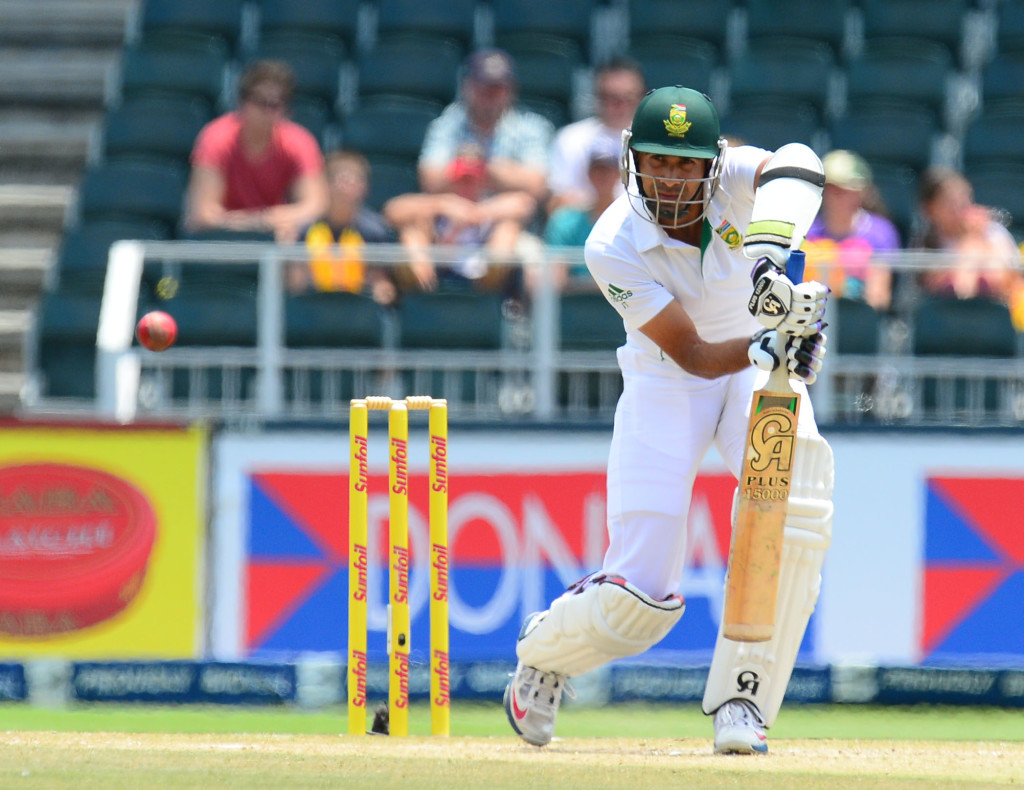I don’t get it. If Imran Tahir coming to the crease as a nightwatchman in the third Test against India wasn’t already bizarre enough, then the moment he worked his way to the middle for the same reason in the second innings was unfathomable.
For the sake of this discussion, it’s important to establish the definition of the term. The nightwatchman’s job is to take most of the strike until the close of play (remaining in overnight, hence the name) and so protect other, more capable batsmen from going out cheaply in what might be a period of tiredness or in poor light.
In order to protect the more capable batsmen, you need to be able to bat a bit yourself, or at the very least possess the ability to resist, to be stubborn, to put bat in front of ball. Tahir was bowled in the first innings, and trapped lbw the second. He lasted a combined 19 balls, and both times, Hashim Amla strode obstinately to the crease to see off the job.
Now, I’ve never believed in employing a nightwatchman in the first place, but for the purpose of assessing the Proteas’ use of it, why did they use Tahir and not, say, Simon Harmer or Kagiso Rabada? The fact that Tahir charged down the wicket second ball to hit a four in the second innings says it all … or rather, says very little as to what the plan actually was. Did they use him as a pinchhitter, or did he go completely against instructions? With Harmer there, someone who has a first-class century to his name, there would have been more security in his chances of seeing off the final few overs, and perhaps even scoring a few the next day to aid the cause.
When one thinks of the nightwatchman, the mind drifts towards Monde Zondeki’s 59 against England in 2003, or Jason Gillespie’s double century against Bangladesh in 2006, or even Alex Tudor’s 99* for England in 1999.
But take a look on Cricinfo.com for the most runs in an innings by a nightwatchman, and the list might surprise you. Occupying second and third (behind Gillespie) with 125 and 108, you will see Mark Boucher, with a pair of centuries in 1999. Back then he was a regular No 8, moved up to No 6 to see off the final few overs of a day’s play against Zimbabwe and England. He hardly fits the bill of a classic nightwatchman, but if you want to protect your best batsmen (Jonty Rhodes and Lance Klusener were due to come in) then who better than someone not only capable of seeing off the day, but can go on to score big the next?
Now on to why I don’t agree with the concept at all, anyway. Two reasons: Firstly, why are you putting in an inferior batsman to see off perhaps the most difficult spell of play? Amla was able to survive both times after Tahir departed, as you would expect from one of your best batsmen, but the ‘wickets’ column became poorer reading, which unnecessarily built up the pressure.
The other is the manner in which it affects the mindset of the batsmen. Your batting position in a Test team is yours – it’s a mindset; something that you try to make your own. So when Tahir came in at three, everyone was forced down a position, in an order that was already tinkered with after the decision to move Amla up to three and put Du Plessis down to five, completely unsettling the status quo.
One of the more startling stats of Australian Nathan Lyon’s nightwatchman sojourns was the number of times the ‘better’ batsman went out first the next day. This happened four out of the five times he survived. But with a high score of 18, it wasn’t down to his ability to bat big innings. While Lyon laboured his way to long, frustrating knocks such as 15 off 43 against the Proteas and 15 off 85 against Pakistan last year, it was up to the player at the other end to score runs, and one could argue that this build-up of pressure led to the wicket, with David Warner perishing before Lyon on three of those four occasions.
I say, don’t use one at all. But if you’re all for it, then at least make the best use of the available options.







